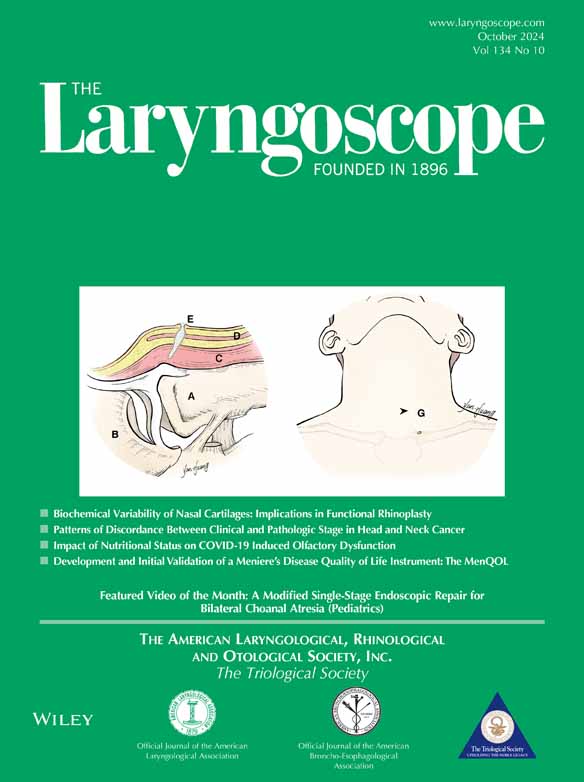Airway and Voice Outcomes After Thyroarytenoid Myomectomy for Bilateral Vocal Fold Immobility
The authors have no funding, financial relationships, or conflicts of interest to disclose.
This abstract is accepted for podium presentation at the Annual Meeting of the American Broncho-Esophagological Association at the Combined Otolaryngology Spring Meetings in Chicago, IL from May 17–19, 2024.
Abstract
Introduction
Type 4 posterior glottic stenosis and bilateral vocal fold paralysis are clinically challenging causes of bilateral vocal fold immobility (BVFI) that result in glottic airway obstruction. Established procedures for BVFI typically worsen dysphonia. We hypothesize the use of thyroarytenoid myomectomy (TAM) in the setting of BVFI will improve dyspnea with decreased detriment to voice.
Methods
Eleven unilateral TAM procedures were performed between April 2021 and June 2023 at a single institution. Pre- and postoperative patient reported outcomes were compared. Representative images of maximal glottic opening were analyzed in ImageJ to calculate ipsilateral bowing index (BI), total BI, maximum glottic surface area (MGSA), and maximum opening angle (MOA). Statistical comparisons were performed with paired t-tests when normality was confirmed with Shapiro–Wilk test and otherwise with Wilcoxon signed-rank tests, with threshold for significance of α = 0.05. Interrater reliability for objective glottal measures was compared with intraclass correlation coefficient (ICC).
Results
Dyspnea Index improved from mean (standard error) of 24.1 (3.8) to 9.1 (3.3), p = 0.004. Voice Handicap Index-10 improved from 20.0 (4) to 10.3 (3.8), p = 0.011. Glottal Function Index improved from 9.6 (1.4) to 6.3 (1.3), p = 0.017. There was no significant difference in ipsilateral BI, total BI, MOA, and median MGSA. There was good to excellent ICCs for all comparisons (0.83–0.95).
Conclusions
TAM demonstrated significant improvement in symptoms from BVFI while not significantly altering glottal structure. These data suggest TAM improves dyspnea in patients with BVFI without significantly impairing voice.
Level of Evidence
4 Laryngoscope, 134:4307–4312, 2024




